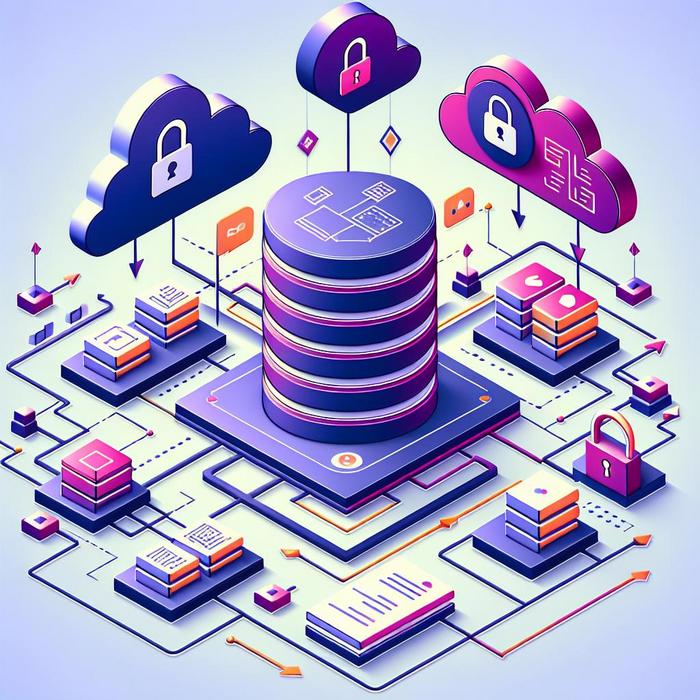Table of Contents Hide
Revolutionizing Efficiency with Data Subsetting Techniques
 6 MIN. READING
6 MIN. READING
Why are Dynamic Data Subsetting Techniques Essential?
Have you ever considered the strategic significance of data subsetting techniques in boosting your data infrastructure’s efficiency? Leading-edge data subsetting approaches promise a new level of accuracy and efficiency for high-level executives, providing a practical, innovative solution for streamlining complex data operations.
Unearthing the Power of Database Virtualization
Before we dive deeper into data subsetting, let’s touch on an associated concept of paramount importance: Database Virtualization. What role does it play in the sphere of data management and why should it be a priority?
Database Virtualization is instrumental in creating a virtual data layer, which allows unified access to information disseminated across a myriad of sources. To put it briefly, this layer doesn’t require the movement or replication of data, streamlining data provisioning for analytics, development, and other crucial functions. This method ensures a more brisk and efficient data flow, making it a valuable asset for businesses of any size.
Adding Value to Data Processing with Subsetting
With the advent of dynamic data subsetting techniques, executives can now navigate the data landscape with renewed vigor and confidence. The central concept revolves around creating subsections of data, that are both meaningful and manageable in size, rather than dealing with the entire database. This approach addresses several key organizational challenges:
1. Reducing Storage Costs: By using subsets of data, you can significantly save on storage costs.
2. Ensuring Data Privacy Compliance: Data subsetting allows for the anonymization of sensitive data, ensuring regulatory compliance. You can review the importance of data privacy compliance in our recent blog post.
3. Optimising Operational Efficiency: Smaller data subsets are quicker to process and handle, leading to overall increased efficiency.
Toolsets and Platforms: Making the Right Choice
Choosing the right tools for the job is as essential as strategy implementation itself. While there are many options available in the market, consider a toolset that offers scalability and robustness, with a proven record in handling complex data structures. Another critical aspect is the tool’s ability to perform data anonymization, preserving privacy while ensuring compliance with data regulations.
Future Prospects: Next Steps in Subsetting Techniques
As we stride forward in the data-driven corporate landscape, the focus on optimizing data infrastructure through innovative methods like dynamic data subsetting will intensify. Research indicates that businesses should invest significantly in these advanced techniques to maintain competitiveness and meet evolving data needs.
The potential to innovate in this domain is virtually limitless, promising groundbreaking transformations in the way executives manage data assets. The ultimate aim should always be to move towards a more efficient, streamlined, and data-driven business model, where information is not just a resource but a strategic tool for growth.
Indeed, data subsetting techniques are more than just a passing trend. They set a new standard for data management, serving as a beacon of innovation, efficiency, and success for businesses. As we continue to explore these phenomena in the corporate world, stay tuned for more insights and analysis on our blog. Discover how data governance tools are shaping enterprises and learn more about how test data automation is redefining speed.
Remember, the journey toward data innovation continues, and so does our pursuit of knowledge and understanding.
The Right Mix: Balancing Value and Compliance with Strategic Tools
Are you striving to balance business value and regulatory compliance in your data operations? Striking this balance can be a complex task for the IT leaders and senior executives who are often at the helm of these data management strategies. The tools you choose to manage your data can significantly impact your compliance levels, operational efficiency, and overall business growth.
Adept choice of tools enhances the practical application of data subsetting in organizations. The focus shifts from merely storing vast quantities of data to using it productively and responsibly. The art of data anonymization is a significant part of this, as it aids in retaining data utility while securing data privacy.
Transforming the Landscape with Data Provisioning
Have you thought about the foundations your data strategy rests upon? Reinventing these foundations with strategic tool choices can create impressive results. Data provisioning, an inherent facet of the subsetting process, uses these tools to efficiently supply data where and when it’s needed. Think of it as an enhanced version of supply chain management, only applied to data, facilitating a smooth flow, better accessibility, and informed decision-making.
Furthermore, in strategies that aim at fast data distribution while not compromising security, data provisioning plays an integral part. Access to reliable and realistic data across the spectrum boosts operational effectiveness, flexibility, and sustainability of the entire data lifecycle.
Drawing Parallels: Comparing Involved Techniques
Evaluation of different strategies and tools is an essential step towards powerful data management. You might be contemplating whether data provisioning or anonymization should take precedence in your data strategy. It’s crucial to understand that each technique brings significant benefits to your data operations and choosing one does not mean disregarding the other.
Data provisioning is related to the agility and fluidity of data. It involves providing data to the business on time, ensuring it is always up-to-date and usable. Effective data provisioning can lead to an increase in overall productivity and operational efficiency.
On the other hand, data anonymization is concerned with the security of data, removing or encrypting personally identifiable information to comply with privacy laws and regulations. To suit the needs of a broad range of businesses, these techniques can be, and often are, implemented in tandem.
Demystifying Database Virtualization
How does the concept of Database Virtualization fit into your organization’s data management solutions? Database Virtualization is transforming data management strategies worldwide by allowing unified data access from a plethora of sources without data replication.
The concept is charmingly simple, yet its implications are profound. It accelerates data provisioning and supports a more nimble data operation process. The potential benefits of incorporating database virtualization into your existed data strategy are limitless. It not only enhances data storage and accessibility but also ensures a much faster, streamlined, and efficient data flow.
Lessons from the Front Lines: Advanced Techniques to Consider
Indeed, modern executive leadership has seen data techniques evolve from simple storage solutions to incredibly sophisticated systems. With methodologies like dynamic data subsetting and Database Virtualization, leaders can redefine their approach to data management.
Moreover, data anonymization has become a significant part of this new data era. In conjunction with advanced data subsetting techniques and data provisioning, anonymization preserves privacy while ensuring compliance with data regulations, crucial for operating within a legal and ethical framework.
In conclusion, dynamic data subsetting along with these advanced techniques offers a balanced, thorough, and comprehensive formula for success in an increasingly data-centric business world. We’ll continue to explore groundbreaking data strategies to help leaders constantly adapt, innovate, and evolve in their data management journey. Let’s together tread the path of data innovation, constantly seeking knowledge and insights in this ever-evolving realm.
Remember, data is more than a business resource. It’s the key to unlock growth, success, and strategic advantages. Stay tuned as we continue our exploration in the ever-evolving world of data management strategies. Stay ahead of the curve, and make data not just a part of your strategy, but the heart of your business.


